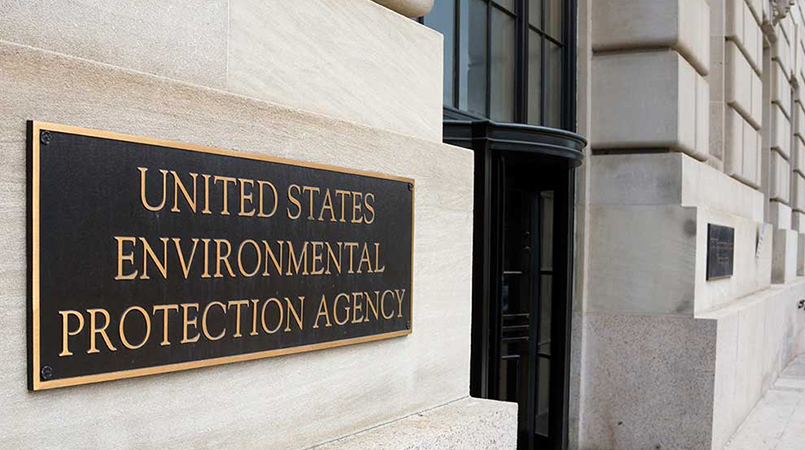EPA Proposes Restrictions on Use of TCE: What You Need to Know
12/22/2016

The U.S. Environmental Protection Agency (EPA) recently issued a proposed rule that would ban certain uses of the chemical trichloroethylene (TCE). The proposed rule was issued under the recently amended Toxic Substances Control Act (TSCA), which gives EPA the authority to evaluate new and existing chemicals, and take appropriate actions against chemicals determined to present “unacceptable risks.” If finalized, the proposed rule would significantly restrict certain uses of TCE. However, EPA’s proposal has been met with resistance from industry representatives who question whether such a restriction would align with the provisions of the Act.
Let’s take a closer look at the proposed rule, including the background and the current controversy.
The Background
The Frank R. Lautenberg Chemical Safety for the 21st Century Act (the Lautenberg Act) was signed by President Obama on June 22, 2016, and represents the first significant revision of TSCA since the original act was written in 1976. The Lautenberg Act received widespread public and bipartisan political support, and was hailed as a means to finally bring many of the chemicals U.S. consumers use every day under federal review. The Act authorized EPA to evaluate the risks of those chemicals, and to take action to restrict the use of those deemed significantly dangerous. It also granted EPA the ability to proceed with rulemakings based on a select group of risk assessments the Agency had completed prior to the Act’s passage.
EPA is basing their proposed rule on one of these preliminary risk assessments – an evaluation of TCE completed in 2014. This risk assessment identified health hazards from exposure to TCE, including through inhalation of vapors. Acute concentrations of TCE vapors were found to irritate the respiratory system and skin, and to cause light-headedness, drowsiness and headaches. Repeated or chronic exposure to TCE was linked to deleterious effects on the liver, kidneys, immune system and central nervous system. The assessment also noted that TCE is a carcinogen through all known routes of exposure.
The Proposed Rule
EPA’s proposed rule would act upon the 2014 risk assessment by banning the use of TCE in aerosol degreasers, including those used for cleaning metal or electrical motors. EPA estimates that TCE is found in at least sixteen different spray degreasers blended by six separate manufacturers, and used at approximately 2,200 commercial facilities. Additionally, the proposed rule would ban the use of TCE for “spot cleaning” at dry cleaning facilities. In an online fact sheet on TCE, EPA advises that recent advances in both technology and garment care have made safer product options for spot cleaning more widely available. EPA maintains that these restrictions on usage would prevent the short-term and long-term exposure risks identified in the risk assessment.
The Controversy
Critics of the proposed rule argue that it does not meet the legal requirements established by the Lautenberg Act. Section 26 of the Act requires EPA to meet science quality standards using the “the best available science” and weight of evidence to make decisions. A representative of the Halogenated Solvents Industry Alliance (HSIA), which represents manufacturers, producers, distributors and commercial users of halogenated solvents such as TCE, referred to the comments of EPA’s own Dr. Penelope Fenner-Crisp, chair of the peer review committee that evaluated the 2014 TCE risk assessment, describing it as a “screening level assessment” and calling for refinement of the assessment on “both the exposure and hazard side of the equation.” A legal representative for HSIA further opined that the TCE assessment relied on a California EPA study that may not be representative of U.S. dry cleaning facilities. Additionally, the representative argued that the cost of compliance with certain aspects of the rule would pose a hardship to small dry cleaning facilities which would need to spend more time performing spot removal using presumably less effective substitutes, and maintained that EPA lacked authority to issue such a rule because OSHA rather than EPA would seemingly have jurisdiction over workplace chemical usage.
EPA will receive and respond to comments on the proposed rule until February 14, 2017. While the future of the rule remains uncertain in the light of the commentary already received and the additional feedback that will likely come in the following months, EPA clearly intends to act on its authority under the Act to mitigate the risks of TCE. Further focus on TCE, as well as other chemicals with established histories of known risk appears likely.
Let VelocityEHS Help
There are no immediate actions to take on the content of the proposed rule until the comment period ends and a final rule is issued. However, with the right tools, you’ll be ready to comply with any future regulatory activity taken by EPA toward TCE. A good chemical management solution can help you track all products containing TCE in your inventory, giving you container-level visibility so you can have the control you need to manage them effectively. An audit & inspections tool can also enable to you to proactively identify small containers of commercially sold TCE-containing products you may not have formally entered into your inventory. By implementing more effective EHS solutions, you’ll be ahead of the curve when it comes to any TCE restrictions made by EPA, and any other future chemical restrictions under the Lautenberg Act.






